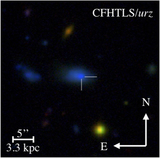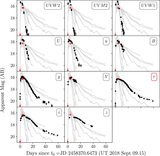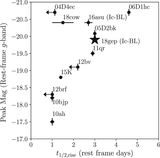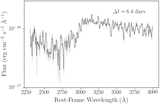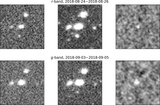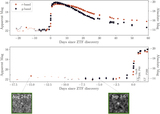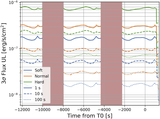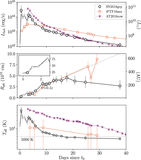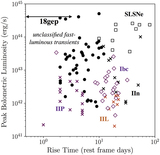Image Details
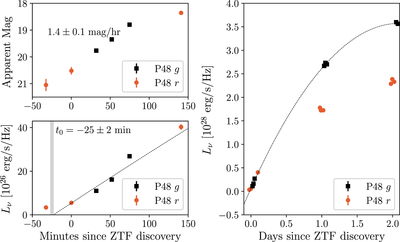
Caption: Figure 2.
The rapid rise in the first few minutes and first few days after the ZTF discovery of SN2018gep. We also show an r-band point from prior to discovery that was found in retrospect by lowering the detection threshold from 5σ to 3σ. Top left: the rise in magnitudes gives an almost unprecedented rate of 1.4 ± 0.1 mag ﹩{\mathrm{hr}}^{-1}﹩. Bottom left: the rise in flux space together with the quadratic fit and definition of t0. Right: the rise in flux space showing the quadratic fit.
Copyright and Terms & Conditions
© 2019. The American Astronomical Society. All rights reserved.


